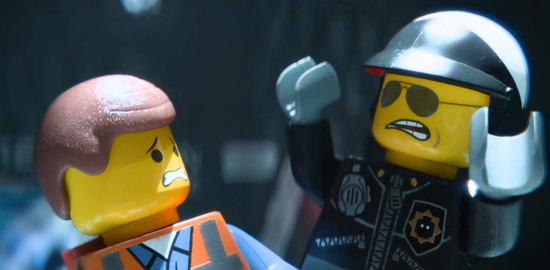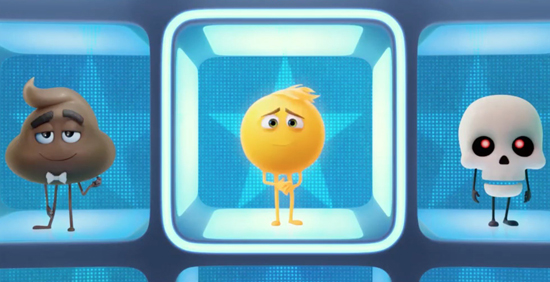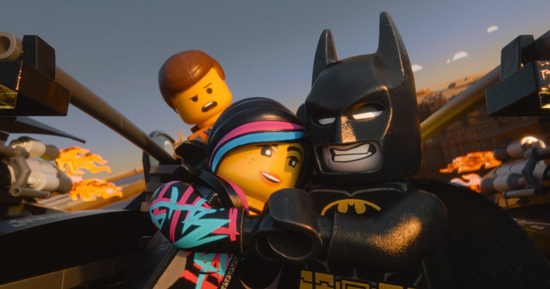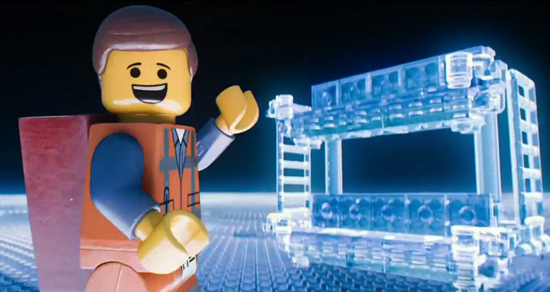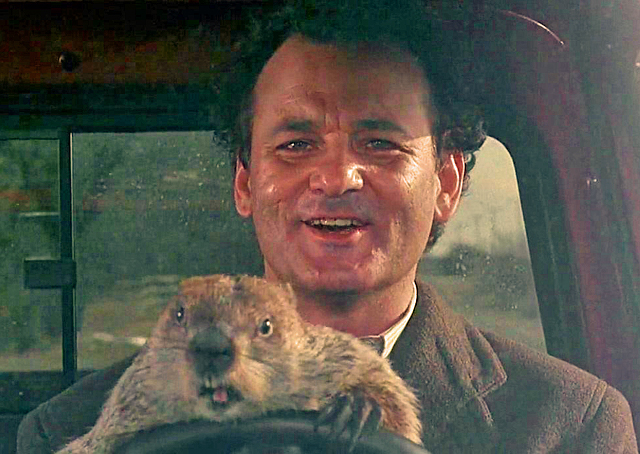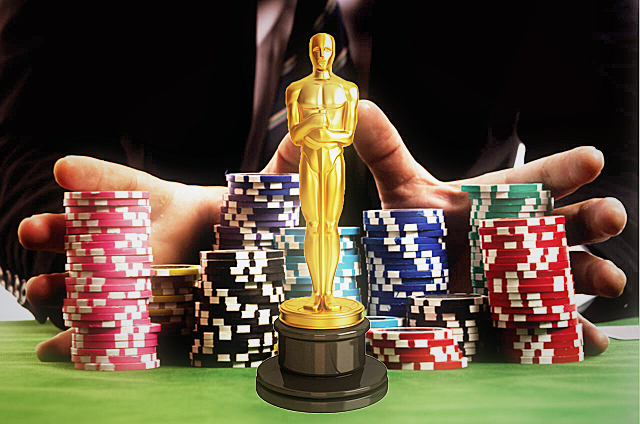
The Oscars are around the corner again, and naturally the vibe around Hollywood is one of excitement leading up to the big night. For many film enthusiasts, it is also a big night, carrying as much weight for them as say the Super Bowl does for others, only in a televised program with far lower ratings. And much like the Super Bowl, you’ll find many people who usually make a game out of predicting who will win, whether it be in office betting pools, simple wagers, or even actual gambling within a casino setting. Everyone has their favorites to be sure when it comes to who they want to see walk away with an Oscar, but there are a growing number out there who are more and more serious about having the edge when it comes to knowing who will win. And it’s not just for the major categories like Best Picture, Best Actor or Best Actress; it’s all the down list categories as well. In a way, it’s kind of a good thing for the business because it’s getting people more interested in the often overlooked categories like the Shorts , helping those films to gain exposure that they otherwise wouldn’t have had. But, when more is at stake for those making those predictions, the need to know how the results will turn out becomes even more of a big deal. Nowadays, you will see every publication that covers the industry release their own Oscar predictions in these weeks leading up to the awards, making their own best guesses as to how it will all play out; and considering how much insider access that they are usually granted, it’s safe to say that they have a good finger on the pulse. But, for those who want to put money down on the results of the Oscars, they should take note of the fact that now matter how much of an inside tract many people might have, the Awards have still shown time and again that nothing is certain.
Case in point, the results of last year’s Academy Awards; probably the most unpredictable that we’ve ever seen in recent memory. And I’m not just talking about the now infamous flub at the end of the night where the wrong card was read for the night’s top award, although I don’t think anyone in a million years could have predicted that to happen. I’m talking about the unprecedented come from behind victory that took the modest, little seen Moonlight (2016) to beat out the heavily favored La La Land (2016) for Best Picture. Common wisdom would have told you that La La Land was going to steamroll through the Academy Awards ceremony unchallenged. It was nominated for a record tying 14 awards, and the other two movies that have achieved that mark before went on to win Best Picture as well (1950’s All About Eve, 1997’s Titanic). By contrast, Moonlight received 8 nominations, which is a good amount, but pale in comparison to La La Land. La La Land was also a box office hit, earning more than $100 million domestically, while Moonlight was pretty much seen by only a handful of audiences in small art house cinemas across the country. By all accounts, this upset should never have happened. And as the awards ceremony played out last year, it seemed like nothing out of the ordinary was going to happen. La La Land came to the final award of the night with 6 already in their pocket, including big ones for director Damien Chazelle and star Emma Stone. Moonlight had picked up it’s expected awards for Screenplay and Supporting Actor for Mahershala Ali. So, when Warren Beatty and Faye Dunaway opened up the wrong envelope that was handed to them, and mistakenly thought that La La Land had won, it didn’t appear to anyone that anything was out of the ordinary. Until it was. What last year’s Awards proved is that a lot of the Awards season is built around compliance and expectations, much of which the actual Academy seems to enjoy working against.
The Academy of Motion Picture Arts and Sciences (A.M.P.A.S) has been an integral part of the movie business ever since the early days of the art-form. Created in 1927 by MGM studio mogul Louis B. Mayer, the organization was founded to honor and promote the various artistic and technical achievements accomplished within the industry, and help to promote those honorees to the rest of the world. The Academy held it’s first Academy Awards 90 years ago in the famed Roosevelt Hotel on Hollywood Boulevard, and it was little more than a banquet with only a handful of awards unceremoniously handed out in a quick 10 minute session. Since then, both the Awards and the Academy grew in stature and prestige to become the chief authority over quality within the industry. Despite all the many different awards given out to movies and professionals throughout the year within the industry, it all culminates with the Oscars, and that has mainly been due to the fact that it has set the standard for the longest amount of time. But to understand the way the Academy Awards are selected, you need to know a bit about who is actually casting the votes. The Academy is made up of a voting body of 6,000 or more members, all divided up into different branches depending on those members’ selective profession; Producers, Actors, Writers, Directors, and Technicians. The actual full roster is a closely guarded secret by the Academy, but individual members are allowed to declare themselves as a voting member. Membership is also granted to an individual by the Academy; no one can buy their way in or demand membership, it can only be given out by the Academy board itself as a recognition of the new member’s merit as a contributor to the industry. Once a member, the voter casts a ballot for the categories within it’s own branch, and then votes as part of the full body of the Academy for the top prize; Best Picture. It’s basically an honor given out by an elite group of industry professionals, rewarding the accomplishments of their peers. But, a lot of the secretive nature behind how the Academy runs their balloting has caused it to face a lot of heat over the years.
The most common complaint leveled at the Academy is that they are often out of touch. It is true that some of the Academy’s choices for Best Picture have not really stood the test of time that well, and it is often a reflection of the fact that the Academy membership skews more heavily towards a certain demographic. If you were to judge the make-up of the Academy based on their tastes in movies as well as by who’s declared themselves publicly as members, you would be right in assuming that it’s made up of mostly white males over the age of 50. One of the perks that has long existed with being a part of the Academy is a lifetime membership. And as some of those members grow much older, they tend to hold onto their own preferences in movies, instead of say newer trends. This became a major issue when people were complaining that critically acclaimed and highly successful genre flicks were being ignored in favor of smaller, socially minded dramas instead. The lack of a Best Picture nod for Christopher Nolan’s The Dark Knight (2008) put extra pressure on the Academy to change their dismissive attitude towards genre flicks, and they did so by expanding the nomination field from 5 to as much as 10 Best Picture nominees. But, an even bigger issue was raised when it became clear that the Academy was suffering from a distinct lack of diverse representation among it’s members. The “Oscars So White” campaign took the Academy to task for it’s lack of nominations to people of color, and while complaining about who wasn’t nominated was a bit misguided, the movement did raise awareness of the fact that the voting body of the Academy needed to change. Then Academy President Cheryl Boone Issacs thankfully recognized this and sought to make a change. In the year after “Oscars So White” the Academy made sweeping reforms to their voting standards, meaning that privileges must be earned through continued work within the industry, and not just left to people long out of touch and just resting on their laurels. Also, a huge expansion of membership was started, with a focus on bringing in professionals from more diverse backgrounds. With these sweeping changes, it doesn’t seem all that shocking that the Academy would gravitate towards a riskier choice like Moonlight instead of a safe bet like La La Land.
You can see a lot of these instances where the Academy gives into these push and pull efforts made within the industry. For the most part, it does leave the organization in a better overall standing by the end, with their authority as the final word for film quality at year’s end remaining in tact. But, change often has to come from outside, because there are definitely periods of complacency that still cast their shadow over the Academy. These periods are often the ones that make it easier for the odds makers, because it’s when the Academy becomes predictable. One of the more recent periods of predictable behavior from the Academy was when they seemed to have an infatuation with movies that celebrated the industry itself. This was evident with the Best Picture wins of The Artist (2011) and Argo (2012), both of which portray the industry in the most glamorous and heroic light possible. When you remember that the Academy is made up of industry professionals from several different branches, it doesn’t seem all that unusual that they would fawn over stories that flatter the work that they do. But, even this trend was short lived and last year proved that a changing industry is more relevant now than before. La La Land, another movie that celebrates the mystique of Hollywood, seemed almost tailor made to follow in The Artist and Argo’s footsteps, until the indie drama about an inner city black man coming to grips with his own homosexuality proved that notion wrong. While some things are easy to predict about the Oscars, the thing that is far less predictable is when the Academy itself makes it’s heel turn and completely works against expectations. We saw that heel turn manifest last year and who knows how it will play out in the years to come. For one thing, it shows that paying close attention to how the Academy itself is operating is a key factor in trying to predict who will win an Award.
Another factor to take into account is the way that the Academy, and by extension, the industry wants to be perceived. This is an industry that prides itself on glamour and it often extends out towards those that the industry chooses to best represent them. Oftentimes the easiest categories to handicap for the Oscars usually are the acting categories, and one common trend that you’ll notice among the recipients of the Awards is the fact that they themselves represent a side of the industry that the Academy wants to push forward. There are exceptions to be sure, as some performances are just too good to overlook (Christoph Waltz in Inglorious Basterds for example), but oftentimes the award goes to someone merely for who they are and the performance is irrelevant. Sometimes it’s for a long overdue Award for symbolizing a career achievement (Al Pacino in 1992 for Scent of a Woman), sometimes it’s for being that year’s breakout star (Alicia Vikander in 2015 for The Danish Girl), and sometimes it’s because the Academy loves a good career revival (Matthew McConaughey in 2013 for The Dallas Buyers Club). But, there are some not so positive aspects about the predictability of the acting Oscar recipients, especially when you consider that the female led category winners skew far younger and prettier than their male counterparts. The lack of diversity is also an issue, as few winners have ever been people of color; especially problematic when you consider there has still only been one Best Actress winner who is black in the 90 year history of the award. The categories are more than any other the ones that benefit from the exposure that the performers put out before the ceremonies. If you play by the Academy’s game, you are more likely to come out a winner. But, the Academy, to it’s credit, recognizes the shortcomings they have plagued their image before. Had people not made such a big deal about “Oscars So White,” we probably wouldn’t have seen movies like Moonlight get as much exposure as it otherwise would’ve had, and Mahershala Ali’s Oscar winning work might not have turned up as so. But, if the nominee fits into the types that the Academy still likes, such as playing a historically significant figure or someone with a disability, then it’s easy to see why those same performances year in and year out always come up on top.
The industry also looks to the Academy Awards as a stamp of prestige that can help drive up their box office even more. It’s not uncommon to see the awards distinctions plastered all over the marketing material used for a movie. And the results are proven as well. Movies do see a post awards box office bump every year, especially those that win the night’s biggest award. Sometimes, it’s the thing that the movie needs to turn a profit in the end, so the studios and production companies make a big deal about it. While casual audiences couldn’t care less, industry professionals spend exorbitant amounts of marketing money to make their final case for Award season gold, and for the most part, they more than anything are what drives the Oscar’s importance to the industry as a whole. In many cases, this has gone too far. Among Harvey Weinstein’s many dubious crimes, he was also notorious for influencing members of the Academy with many borderline illegal efforts, leading the Academy to crackdown on excessive campaigns like his. But usually the louder a movie announces itself to the world, the more likely that it will mislead the casual person into thinking that it is the most likely to win. That’s been the case more recently as the Academy has seemed to lean towards a trend of spreading the wealth around the industry as opposed to gravitating towards one major winner. The days of dominant players like Titanic, The Lord of the Rings: The Return of the King (2003), and Slumdog Millionaire (2008) seem to be gone, as few top earners win in many down list categories. 2015’s Best Picture winner Spotlight only won a single other award that night, for Original Screenplay, giving it less of a clear distinctive identity from that Awards. It’s good for the wider breadth of winners, but less so for the odds makers who want a clearer sense of certainty from their awards, making it so the effort put into the hype is not wasted.
While it may not seem all that important from the outside, there are a lot of people who put a lot of stake into having an inside tract with knowing who will win an Oscar. There are even websites devoted to year round coverage of the Oscar race, like GoldDerby.com. Everyone who believes they have a pulse on what Hollywood is going to do Oscar night makes as big deal about their predictions, and for the most part, many guesses are easy to make. But as we saw with the La La Land/ Moonlight debacle last year, nothing is ever certain. The best we have to go on are perceptions of who we think are making the ultimate decisions on each year’s ballot, which the Academy still keeps under wraps, and also by the aggressive efforts the studio makes to push their movie forward. Even still, the Academy plays by it’s own rules and those rules change over time. Even still, it is worth investing in, especially if you see a disconnect between what the Academy prefers and what audiences respond to. Because of that, the Academy has thankfully become more diverse over time, but it also has made the awards more predictable. If you are someone who puts a lot at stake with the Academy Awards every year, it’s best to not to put too much weight behind what the critics and industry insiders think; and yes, I understand the irony of that statement as I use my own site for making Oscar predictions, like I will in next week’s article. For those who want more insight, just look at the history of the Awards. The Oscars have less rewarded movies based on their own merits than how they stand as a cultural touchstone. If you look at how each year has gone, the Awards usually act as more of a statement rather an acknowledgement of it as a work of art. And this is a thing that changes over time, causing common notions of the industry to be turned around without warning sometimes. We all try our best to be right, but like many other electoral processes, the end result may turn out to be something that even the system didn’t anticipate. And while uncertainty is a disadvantage to an invested predictor, it nevertheless makes for a more entertaining Academy Awards, and more drama is what makes the Oscars worthwhile when all is said and done.


